C2 V6
Putting France's biggest engine into Citroën's smallest model: that, in a nutshell, was the brief Citroën gave the students at the Espera school for this extraordinary car: the C2 V6. From a blank sheet of paper to the carpet of the Geneva Motor Show in March 2005, it took them less than three months to transform an ordinary production C2 1.4 HDI into a competition car worthy of the WRC.
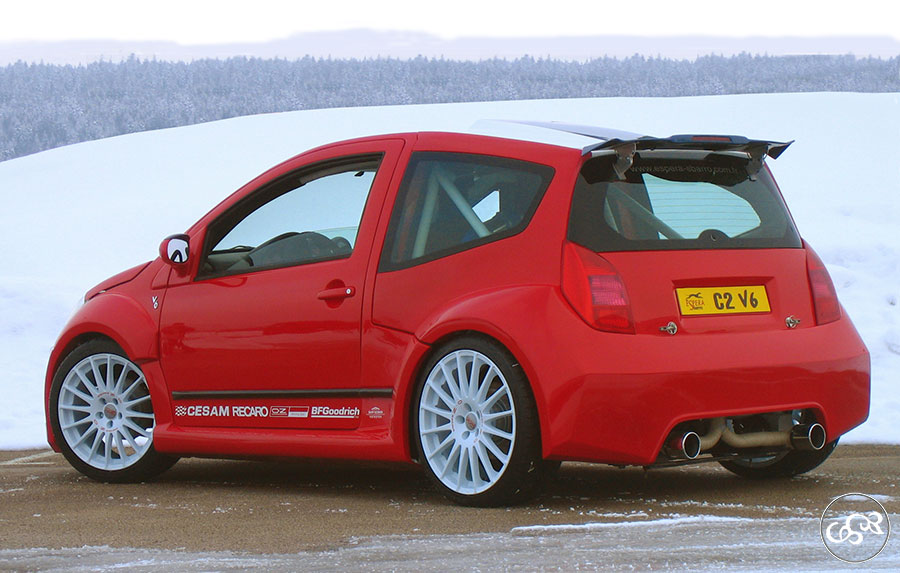
Big engine, small body
The idea of a large engine in a small body is not new. Caroll Shelby's Cobra, for example, was based on this principle from time immemorial, and proved its worth. In 2005, Hartge equipped the small BMW 1 Series with the V8 of the former M5, which was increased to 450 hp! Without going to such extremes, Sbarro's students injected 220 horsepower into the Citroën C2. This cavalry comes from the V6 engine used in the C5 and 406. In this case, it's the block from a pre-production 406 V6 destined for the scrap heap. Placed in a central rear position, in place of the rear seats, it required the wheelbase to be lengthened by 5 cm, and the running gear to be completely redesigned. In particular, the car became a rear-wheel drive! None of this can be improvised, and the students benefited from Sbarro's experience in this field: Renault Mégane V6 in 1998, Seat Leon in 2001 and C3 Pluriel V6 in 2004. Even so, achieving this in three months is no mean feat.
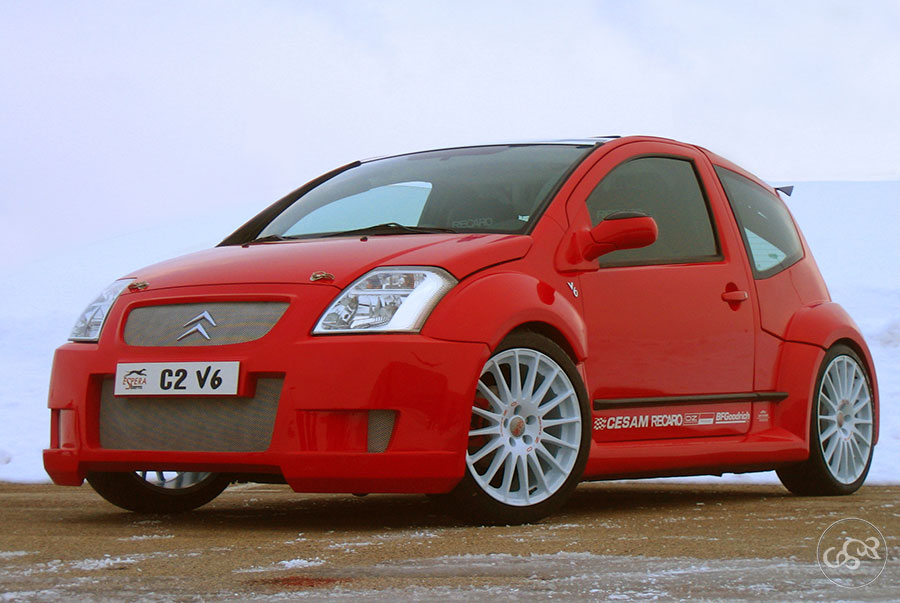
Rally inspiration
Aesthetically, the C2 also meets Citroën's requirements: to evoke the C2 Super 1600 of the World Rally Championship. The colors were therefore self-evident: red and white, right down to the engine. The rear fenders are 16 cm wider, the rear section opens as a single unit to facilitate mechanical maintenance, a roll bar has been added, the front seats have been replaced by bucket seats with harnesses, the body panels are in fiberglass (except for the front hood and the original doors), and there are twin exhaust outlets. All punctuated by magnificent 18" alloy wheels at the front and 19" at the rear. Inside, you'll find a bevelled steering wheel, an aluminium gearshift with cut-out chevrons, switches for the fuel pump and two fans, and the inevitable circuit breaker. The meter bases and air vents are tinted red. The whole thing exudes racing ambience.
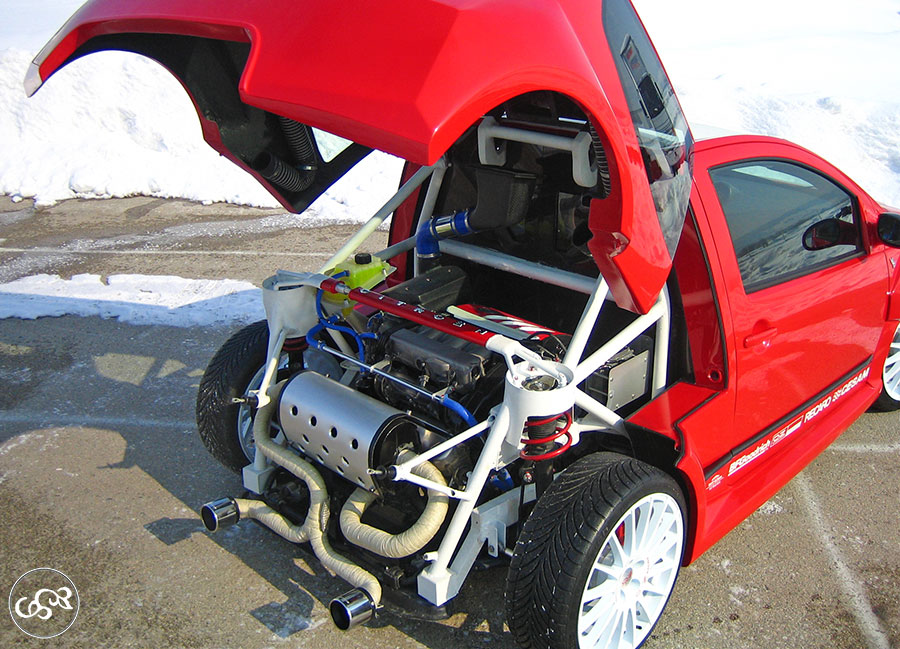
Drive it!
How does this splendid creation perform on the road? A few journalists had the privilege of driving the C2 V6 on the Pontarlier airfield. The reactions were the same for all: a nimble car, very lively but very supple, a gearbox that's not always easy to master, heavy steering that's not very precise, and tires that sometimes rub on the wheel arches. All of which testifies to the speed of the car's construction: designing and building the C2 V6 in such a short space of time is quite a feat. Of course, tuning and fine-tuning were not possible. The mere fact that the car runs, and runs very well indeed, demonstrates Sbarro's expertise.
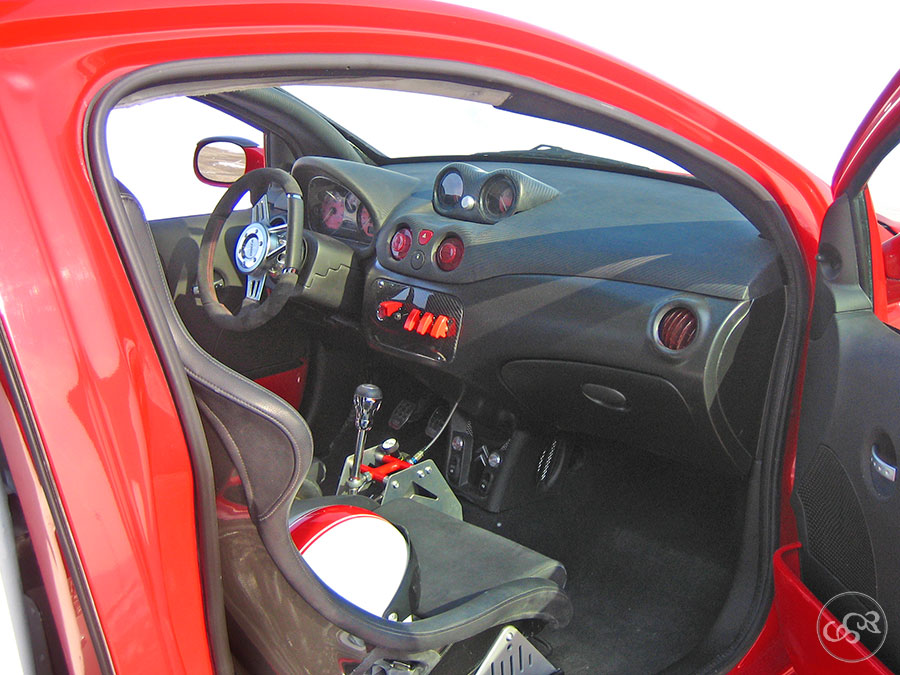
An endearing, colorful car that leaves you dreaming of its potential. That's what we'll remember about the C2 V6. Let's put aside the frustration of never seeing it built in series and look ahead. In 2006, the students at Espera were given a C1 and a 125 hp C2 1.6 VTS engine and turned it into the GT-C1. Still the myth of the big engine in a small body. The legend continues...
- Peugeot 406 coupé V-six engine
- 2946 cm3
- 220 hp
- Transverse rear mid-engine position
- 5-speed manual gearbox
- Rear-wheel drive
- BF Goodrich g.force profiler tires - front: 225/40 ZR 18; rear: 225/35 ZR 19
- Wheels OZ Superturisme GT 8x18 front, 9x19 rear
- Width 1.82 m; wheelbase 2.36 m
- Weight approx. 1000 kg
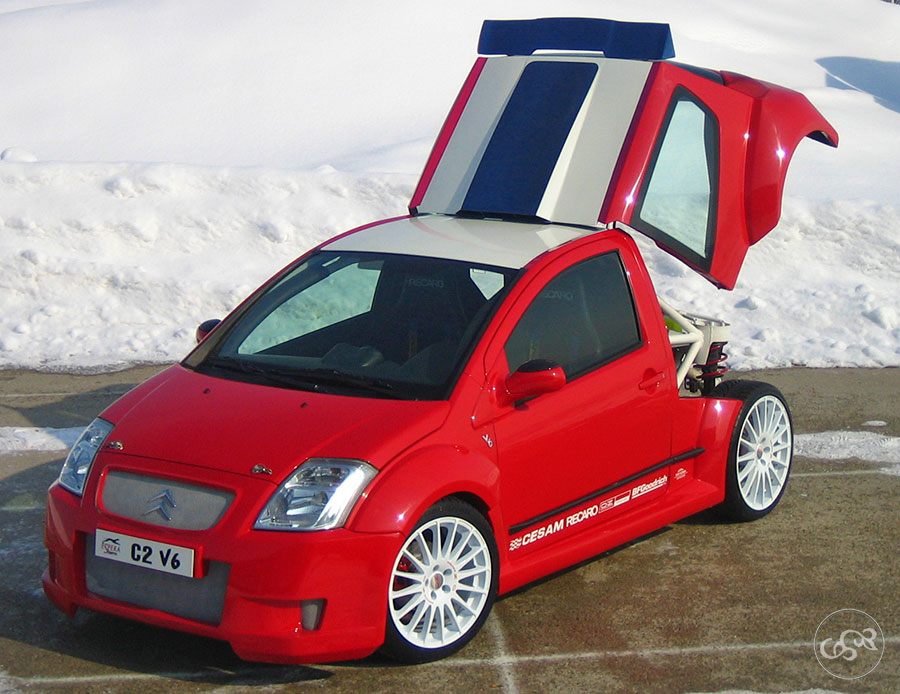
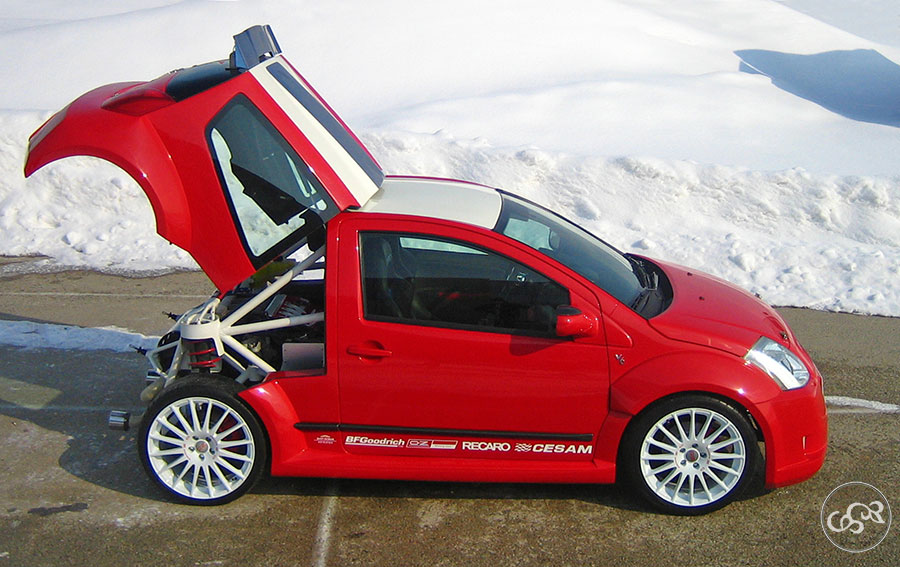
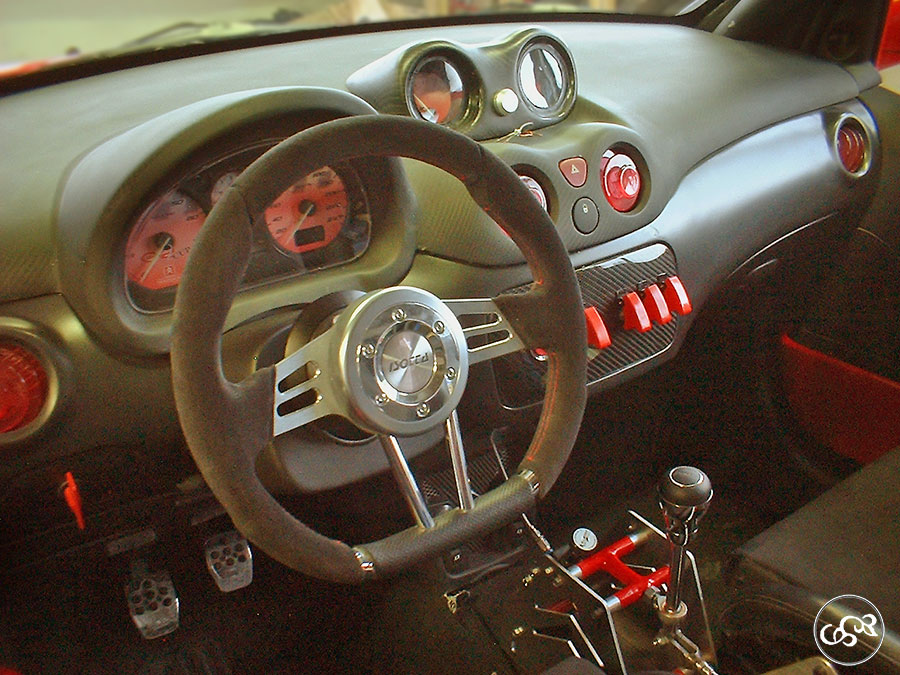
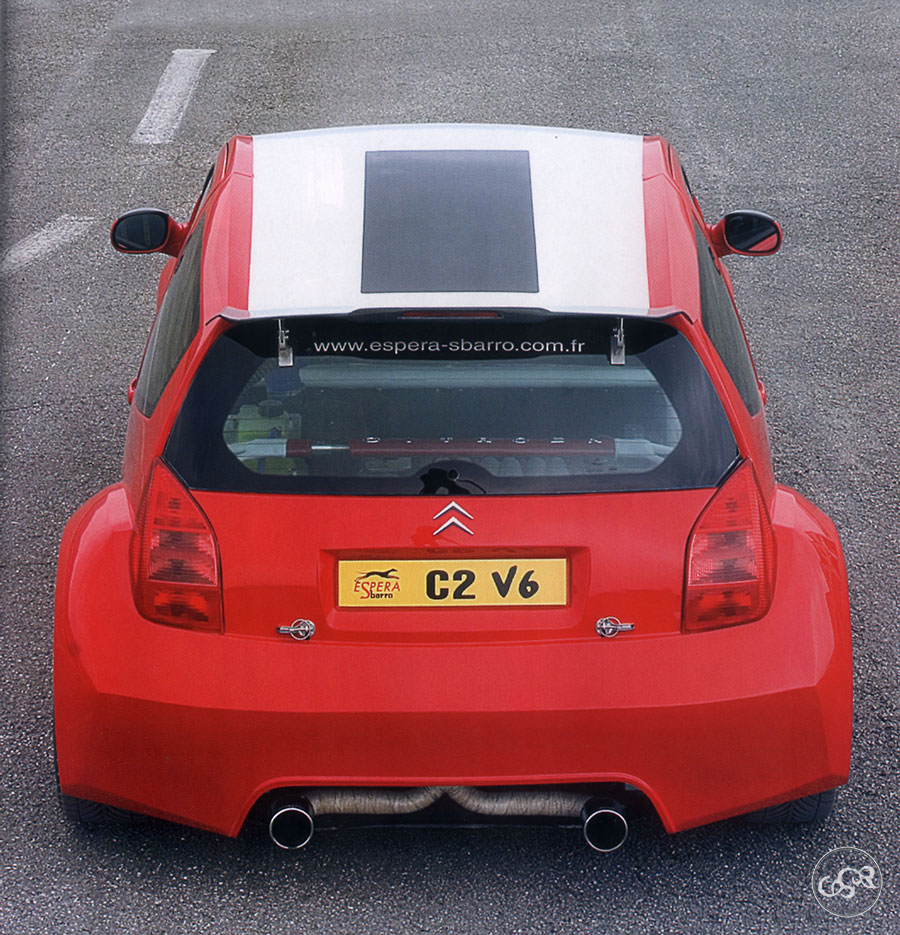
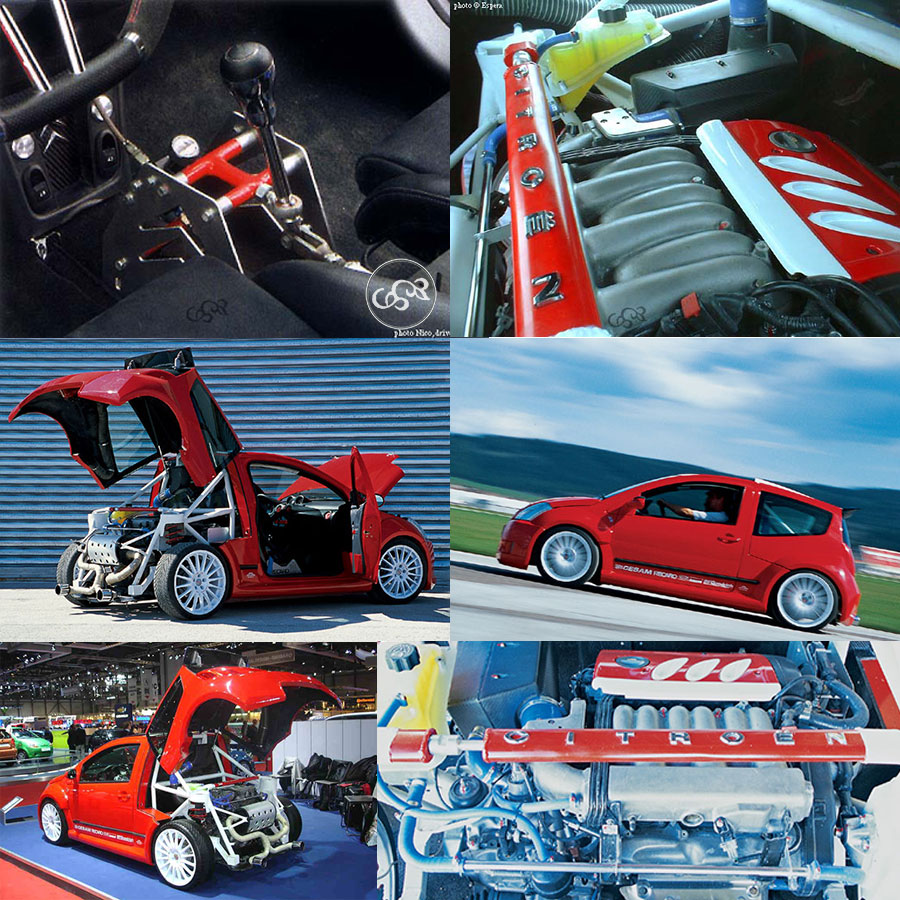
In brief
1- Official order from Citroën
2- V6 engine in the smallest French car of 2005
3- The only rear-wheel drive C2